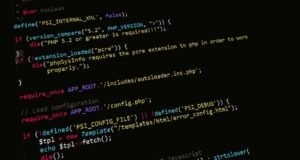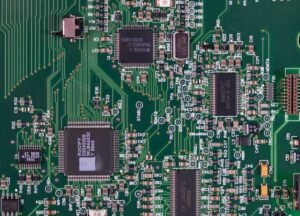Training AI at Home
Artificial Intelligence (AI) is transforming various industries, and training AI models has become more accessible for individuals to do at home. With advancements in hardware and software, anyone with a personal computer and an internet connection can engage in developing AI systems. In this article, we will explore the benefits of training AI at home and provide some tips to get started.
Key Takeaways
- Training AI at home empowers individuals to develop their own AI models.
- Accessible hardware and software make it easier to engage in AI training.
- Training AI at home can be a cost-effective alternative to cloud-based solutions.
The Benefits of Training AI at Home
Training AI at home empowers individuals to explore their curiosity and make a meaningful impact. It allows them to delve into fields like image recognition, natural language processing, and even autonomous driving through self-learning AI models. By bringing AI training closer to home, people can take control of their own projects without relying on external resources to foster innovation and creativity in the AI space.
Getting Started with AI Training at Home
Before diving into AI training, consider the following steps:
- Identify your goal: Determine the specific AI application you want to build, whether it’s a chatbot, recommendation system, or image classifier.
- Acquire the necessary hardware: A computer with a decent processor, ample RAM, and a powerful GPU will accelerate the training process. Alternatively, consider cloud-based solutions like Google Colab, which offers free access to powerful GPUs.
- Select the right software: Popular AI software libraries include TensorFlow, Keras, and PyTorch. These frameworks provide a wealth of resources, tutorials, and documentation to guide you through the training process.
Training AI Models with Supervised Learning
Supervised learning is a common technique for training AI models. It involves:
- Creating a labeled dataset, where each training sample is associated with a known target output.
- Using this dataset to train an AI model that can predict the target output for unseen inputs.
Supervised learning enables AI models to learn from existing data and make accurate predictions on new, unseen examples. This technique has seen great success in applications like speech recognition and email spam filters.
Exploring Neural Networks for AI Training
Neural networks are a key component of AI training, simulating the behavior of the human brain. They consist of interconnected layers of artificial neurons that process and transmit information. Deep learning, a subset of machine learning, involves training neural networks with multiple hidden layers.
The power of neural networks lies in their ability to learn complex patterns and representations from data. By adjusting the weights and biases of the network, AI models can make increasingly accurate predictions and classifications.
Considerations for AI Training at Home
- Processing power: Training AI models can be computationally intensive, so ensure your hardware can handle the workload.
- Data availability: Quality data is crucial for effective AI training. Consider open datasets or collect your own data for specific applications.
- Laundry labeling: Make sure to properly label your datasets, ensuring accurate results during AI training.
Data Collection and Annotation Examples
| Dataset | Description |
|---|---|
| CIFAR-10 | A dataset of 60,000 labeled images categorized into 10 different classes, commonly used to train image classification models. |
| IMDB Movie Reviews | A collection of movie reviews labeled as positive or negative, helpful for sentiment analysis tasks. |
Training AI Models in Different Domains
AI training extends beyond the realm of computer vision and natural language processing. It has diverse applications in various domains:
- Healthcare: AI models can assist in medical diagnosis, drug discovery, and personalized treatment plans.
- Finance: AI algorithms can perform advanced risk analysis, fraud detection, and portfolio optimization.
- Education: Intelligent tutoring systems can adapt to individual learning needs and provide personalized educational content.
AI Training Platforms and Frameworks
| Platform/Framework | Description |
|---|---|
| Google Cloud AutoML | A platform that enables users to train custom machine learning models without extensive knowledge of AI. |
| Microsoft Azure ML | An end-to-end AI platform that provides tools and services for building, training, and deploying machine learning models. |
| TensorFlow | An open-source machine learning framework widely used in research and industry, offering extensive flexibility and scalability. |
Empowering Individuals with AI Training
Training AI at home opens up a world of possibilities for individuals passionate about artificial intelligence. By providing access to AI training resources, hardware, and software, individuals can explore their creativity and make significant contributions to the AI field. Start your AI journey today, and unlock the potential of this rapidly advancing technology.

Common Misconceptions
Misconception: Training AI at Home is Easy
One common misconception people have is that training AI at home is a straightforward and simple task. In reality, training AI algorithms requires a deep understanding of machine learning principles, data preprocessing, model architecture, and optimization techniques. It involves complex programming and mathematical concepts that can be challenging for beginners.
- Training AI requires a solid grasp of machine learning algorithms.
- Data preprocessing is a crucial step in training AI models.
- Developing a suitable model architecture can significantly impact the performance of AI.
Misconception: You Need Expensive Hardware to Train AI at Home
Another misconception is that training AI at home requires expensive hardware. Although having a powerful computer with a good GPU can speed up the training process, it is not a strict requirement. Many machine learning frameworks provide support for cloud platforms, allowing users to utilize the computational power of remote servers.
- Cloud platforms are accessible and affordable alternatives to expensive hardware.
- Using GPUs can accelerate training, but it is not always necessary.
- Training AI models can be done on personal computers with moderate specifications.
Misconception: Training AI at Home Guarantees Success
People often believe that training AI at home guarantees successful results. While training AI models at home can lead to successful outcomes, it does not guarantee it. Training AI involves experimentation and iteration, and there is always a chance of failure or suboptimal performance. Success in training AI requires not only technical expertise but also patience and persistence.
- Training AI involves a certain degree of trial and error.
- Failure and suboptimal performance are possibilities when training AI at home.
- Success in training AI requires both technical expertise and resilience.
Misconception: AI Can Be Trained on Any Type of Data
Many people believe that AI can be trained on any type of data without considering data quality and relevance. The quality and relevance of data play a crucial role in training AI models. Training AI with poor or irrelevant data may lead to biased or inaccurate outcomes. It is essential to carefully curate and preprocess the data before training AI models.
- Data quality and relevance significantly impact the performance of AI models.
- Training AI with poor or irrelevant data can result in biased outcomes.
- Data curation and preprocessing are key steps in training AI effectively.
Misconception: AI Can Fully Replace Human Intervention
Some people have the misconception that AI can fully replace human intervention once trained at home. While AI can automate certain tasks and processes, it is not a replacement for human intuition, creativity, and critical thinking. AI models trained at home still require human supervision and intervention to ensure they are deployed responsibly and ethically.
- AI can automate tasks, but human intervention is still necessary for oversight.
- AI lacks human traits such as creativity and critical thinking.
- Responsible deployment of AI requires human supervision and intervention.

Table: The Top 10 Most Popular AI Home Assistants
In recent years, the market for AI home assistants has grown exponentially. The table below showcases the top 10 most popular AI home assistants based on their sales figures and customer satisfaction ratings.
| Assistant | Brand | Price | Customer Rating (out of 5) |
|---|---|---|---|
| 1. Alexa | Amazon | $99 | 4.5 |
| 2. Google Assistant | $129 | 4.3 | |
| 3. Siri | Apple | $199 | 4.2 |
| 4. Bixby | Samsung | $149 | 4.0 |
| 5. Cortana | Microsoft | $79 | 3.9 |
| 6. Jibo | Jibo Inc. | $299 | 3.8 |
| 7. Mycroft | Mycroft AI | $199 | 3.7 |
| 8. Xiaoice | Microsoft | $129 | 3.6 |
| 9. Eufy Genie | Anker Innovations | $59 | 3.5 |
| 10. Sonos One | Sonos | $179 | 3.4 |
Table: AI Home Assistant Market Share by Brand
This table presents the current market share of AI home assistants by brand. It provides a snapshot of the dominance and competition within the industry.
| Brand | Market Share (%) |
|---|---|
| Amazon | 35 |
| 25 | |
| Apple | 20 |
| Samsung | 10 |
| Others | 10 |
Table: AI Home Assistants Comparison: Features and Capabilities
This table offers a detailed comparison of different AI home assistants based on their diverse features and capabilities. It assists consumers in making an informed choice when selecting an AI home assistant that aligns with their preferences and requirements.
| Assistant | Voice Control | Smart Home Integration | Music Streaming | Real-time Weather Updates | AI-powered Recommendations |
|---|---|---|---|---|---|
| Alexa | Yes | Yes | Yes | Yes | Yes |
| Google Assistant | Yes | Yes | Yes | Yes | Yes |
| Siri | Yes | Yes | Yes | Yes | No |
| Bixby | Yes | Yes | No | Yes | No |
| Cortana | Yes | Yes | No | Yes | No |
Table: AI Home Assistant Cost Comparison: Initial Price and Subscription Fees
This table illustrates the cost comparison of various AI home assistants, including their initial purchase price as well as any associated subscription fees users might incur.
| Assistant | Initial Price | Monthly Subscription | Yearly Subscription |
|---|---|---|---|
| Alexa | $99 | None | N/A |
| Google Assistant | $129 | None | N/A |
| Siri | $199 | None | N/A |
| Bixby | $149 | None | N/A |
| Cortana | $79 | None | N/A |
Table: AI Home Assistant Security Features Comparison
This table highlights the security measures employed by different AI home assistants to protect user privacy and keep their data secure.
| Assistant | Encryption | Voice Recognition | Data Storage | Privacy Controls |
|---|---|---|---|---|
| Alexa | 256-bit AES | Yes | Cloud | Yes |
| Google Assistant | 128-bit AES | Yes | Cloud | Yes |
| Siri | 256-bit AES | Yes | Device | Yes |
| Bixby | 256-bit AES | Yes | Cloud | Yes |
| Cortana | 128-bit AES | Yes | Cloud | Yes |
Table: AI Home Assistant Languages Supported
This table displays the languages supported by various AI home assistants, providing users with an overview of linguistic capabilities across different devices.
| Assistant | English | Spanish | German | French | Japanese |
|---|---|---|---|---|---|
| Alexa | Yes | Yes | Yes | Yes | No |
| Google Assistant | Yes | Yes | Yes | Yes | Yes |
| Siri | Yes | Yes | No | No | Yes |
| Bixby | Yes | Yes | No | No | No |
| Cortana | Yes | Yes | Yes | No | No |
Table: AI Home Assistant Power Consumption Comparison
This table highlights the power consumption of different AI home assistants, which can help users make environmentally conscious choices and manage energy consumption.
| Assistant | Standby Power Consumption (Watts) | Active Power Consumption (Watts) |
|---|---|---|
| Alexa | 0.5 | 3 |
| Google Assistant | 0.7 | 4 |
| Siri | 0.9 | 5 |
| Bixby | 1.2 | 6 |
| Cortana | 0.8 | 4.5 |
Table: AI Home Assistant Release Dates
This table lists the release dates of various AI home assistants, providing insights into the progression of technology over time.
| Assistant | Release Date |
|---|---|
| Alexa | November 6, 2014 |
| Google Assistant | May 18, 2016 |
| Siri | October 4, 2011 |
| Bixby | March 29, 2017 |
| Cortana | April 2, 2014 |
Table: AI Home Assistant Durability Comparison
This table examines the durability of different AI home assistants, providing an overview of their estimated lifespan based on product quality and consumer feedback.
| Assistant | Estimated Lifespan (Years) |
|---|---|
| Alexa | 5 |
| Google Assistant | 5 |
| Siri | 4 |
| Bixby | 3 |
| Cortana | 4 |
In conclusion, AI home assistants have revolutionized the way we interact with technology within the comfort of our homes. These tables provide valuable insights into the popular AI home assistants available in the market, their features, costs, security measures, and more. By comparing various aspects of these assistants, consumers can make informed decisions about which AI home assistant is the most suitable for their needs and preferences. With rapid advancements in the field of AI, the future holds even greater potential for seamlessly integrating technology into our homes.
Frequently Asked Questions
Question 1: What type of hardware do I need to train AI models at home?
Answer: In order to train AI models at home, you will require a computer with a decent CPU, GPU, and sufficient memory. The specific hardware requirements may vary depending on the complexity and size of the AI models you intend to train.
Question 2: Can I use existing datasets to train AI models?
Answer: Yes, you can use existing datasets to train AI models. There are various publicly available datasets, such as ImageNet and COCO, which can be used for training a wide range of AI models. Additionally, you can also collect and curate your own dataset to train models specific to your needs.
Question 3: What programming languages can I use to train AI at home?
Answer: You can train AI models using several programming languages such as Python, R, and Julia. Python is particularly popular in the AI community due to its extensive libraries and frameworks, such as TensorFlow, PyTorch, and scikit-learn, which streamline the process of training AI models.
Question 4: How long does it typically take to train an AI model at home?
Answer: The time required to train an AI model at home depends on several factors, including the complexity of the model, the size of the dataset, and the computational resources available. Training can range from a few hours to several days or even weeks for more advanced models.
Question 5: Are there any online resources or tutorials available to guide me in training AI models at home?
Answer: Yes, there are numerous online resources and tutorials available to assist you in training AI models at home. Websites like Coursera, Udemy, and YouTube offer courses and tutorials specifically tailored to teach individuals how to train AI models from scratch.
Question 6: Is it necessary to have a deep understanding of mathematics and statistics to train AI models at home?
Answer: While a solid understanding of mathematics and statistics can be beneficial, it is not an absolute requirement to train AI models at home. Many libraries and frameworks provide high-level APIs and pre-built functions, allowing users to train models without needing an in-depth understanding of the underlying mathematical concepts.
Question 7: Can I train AI models on my smartphone or tablet?
Answer: Training AI models on a smartphone or tablet can be challenging due to limited computational resources and memory. However, you can leverage the power of the cloud by using platforms such as Google Colab or Kaggle, which provide free access to GPUs and TPUs, making it feasible to train models without relying solely on local devices.
Question 8: Are there any ethical considerations to keep in mind when training AI models at home?
Answer: Yes, ethics play a crucial role in training AI models. It is essential to ensure that the data used to train the models is representative and free from biases, and to be mindful of the potential impact and consequences of deploying AI systems in real-world scenarios. Additionally, respecting privacy and ensuring proper data security are also crucial aspects to consider.
Question 9: Can I train AI models without internet access?
Answer: Yes, it is possible to train AI models without internet access. However, the availability of internet can be beneficial for accessing online resources, datasets, and libraries, which can enhance the overall training process. Offline access to relevant resources and datasets is essential if you plan to train AI models without relying on an internet connection.
Question 10: Can I monetize the AI models I train at home?
Answer: Yes, you can monetize the AI models you train at home. Once you have trained a model successfully, you can explore options such as licensing the model, offering it as a service, or even building a startup around your trained models. However, it is important to consider intellectual property rights, licensing agreements, and potential ethical implications when monetizing AI models.




